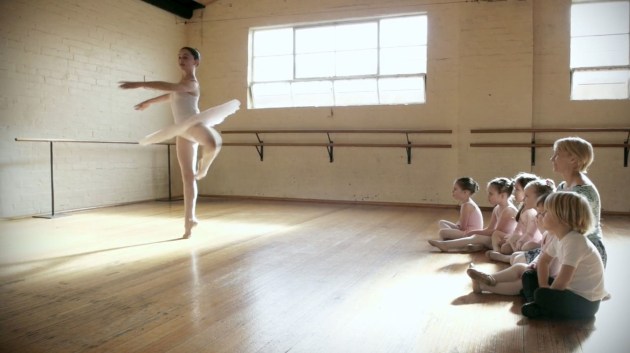The importance of connecting steps

Michelle Dursun reminds us that the little steps that matter.
Spectacular lifts, pin-point accurate fouettès and stunning penchès – classical ballet is certainly very beautiful to watch, but it isn’t just all about perfectly performed virtuosic steps. The connecting steps are just as important. Connecting steps are the in between steps, sometimes called travelling or linking steps, that fill in the gaps in a performance or an enchaînement (a linked chain of movement).
Some of the common connecting steps in ballet are pliès, glissades, coupés, pas de bourrées, tombés and chassés. These steps are often employed as preparation for a jump, to change position or to start a new choreographic phrase.
In the language of dance, connecting steps are as important to ballet as pronouns and prepositions are to a sentence. Without them, all you are left with is a series of poses, not a sequence of movement.
Light and Shade
Josephine Woodberry from Brunswick School of Dance in Melbourne explains that while connecting steps perform an important practical purpose in dance, allowing dancers to switch directions or propel into a leap, they are also important as “they allow the dancer to physically achieve the desired quality of movement – the light and shade of dance”.
The Dutch dancer and spy, Mata Hari once said: “The dance is a poem of which each movement is a word.” Woodberry expands on this, saying, “Just as poets employ literary structures such as repetition and verse to express ideas and stir emotions, so too dancers utilize a variety of similar tools.”
Steps of differing sizes and rhythms are combined to create phrases, through which dancers communicate feeling. For example, “A moment of suspense or apprehension can be created by a series of delicate lead-in steps prior to an exciting grand allegro jump,” Woodberry says.
Seamless Performance
Dancers who are truly beautiful to watch understand the importance of the total performance and pay as much attention to the in-between steps as they do to the spectacular lifts, turns and jumps. It can be very difficult to watch a dancer who is “on” one moment and “off” the next.
Attention to detail is key, as well as ensuring a deliberate focus on what is being communicated through the movement. Intention is important because, just as in a story different words have different emphasis, so too should steps in a dance sequence.
Lincoln Kirstein, the co-founder of the New York City Ballet, is quoted as saying: “As aria is to opera, words to poetry, color to painting, so sequence in steps - their syntax, idiom, vocabulary - are the stuff of stage dancing.”
The precision and artistry with which connecting steps are executed impacts the fluidity and gracefulness of the performance. Of course audiences will appreciate perfect pirouettes, but there is a good reason for all that barre and centre practice in class. Perfecting steps and mastering technique in class ensures a crisp and seamless performance on stage.
Ballet classes from beginning through to advanced levels work on the perfection of steps and technique (increasing in complexity), along with the application of movement dynamics appropriate for each step.
Though not as spectacular as a grand jeté or a penché, dancers need to make sure that they execute each coupé, glissade and pas de bourrée with same intention, grace, placement and care. Clean and smooth transitions help make the hero or highlight steps look that much more spectacular.
This article was first published in the August/September '17 issue of Dance Australia. For more articles like this one buy the latest issue at your favourite magazine retailer, subscribe here or purchase an online copy via the Dance Australia app.


